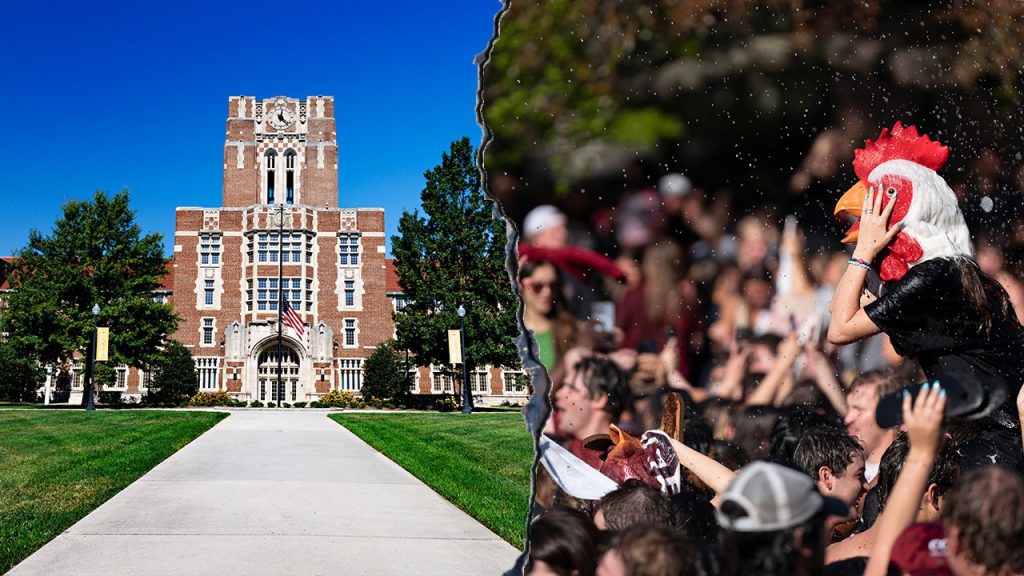Sunshine, Football, and Greek Life: The Southern College Migration
In a remarkable shift in American higher education, students from the Northeast are increasingly turning their backs on Ivy League aspirations in favor of universities across the American South. This educational migration has reached record levels, with Southeastern Conference (SEC) schools experiencing a staggering 91% increase in northeastern undergraduate enrollment between 2014 and 2023. The University of South Carolina (USC) exemplifies this trend, seeing a 90% rise in out-of-state students during the same period. What’s driving this change? The allure of sunshine, vibrant football culture, and robust Greek life has created a powerful draw that’s reshaping the collegiate landscape and challenging traditional notions about prestigious education.
The University of South Carolina stands as a prime example of this demographic transformation. The university now hosts over 40,000 students, with out-of-state enrollment jumping an impressive 58% over the last decade. The majority of these transplants hail from northeastern states like New York, New Jersey, Pennsylvania, and nearby North Carolina. This influx has created what some students describe as northern enclaves within southern campuses. Sean Carroll, a 21-year-old USC senior from New York, noted that the northern presence is so strong that “you don’t even realize you’re in South Carolina.” His fraternity, Chi Psi, reflects this reality—only ten of its 200 members come from states south of Virginia. This has even led to cultural divisions within campus social life, with Carroll observing that “Northern fraternities hang with northern fraternities, southern with southern,” and even tailgating areas becoming segregated along regional lines.
Social media has played a significant role in fueling this migration south. High school students from the Northeast are increasingly exposed to idyllic depictions of Southern college life through platforms like TikTok and Instagram, which showcase sports events, Greek activities, and year-round outdoor living. Cameron McManus, a high school senior from the Washington D.C. suburbs, cited these exact factors when explaining his interest in schools like Clemson, USC, and UNC Chapel Hill. “You can be outside all months of the year,” he noted, highlighting the climate advantage that southern institutions enjoy. The numbers support this perception-driven shift: applications to Southern colleges have surged by 50% since 2019, significantly outpacing the less than 30% increase seen at schools in New England and the mid-Atlantic region.
This southern migration reflects both the growing appeal of SEC schools and the increasingly competitive landscape of elite university admissions. Today’s high school students typically apply to more colleges than previous generations did, spreading their applications across a wider geographical area as they hedge against the daunting acceptance rates at traditional northeastern powerhouses. The consequence has been a dramatic reshaping of university demographics across multiple states. The phenomenon has become so pronounced that some describe it as “trendy” to attend southern schools, creating a self-reinforcing cycle as more northeastern students follow their peers southward, further enhancing the appeal for subsequent classes of applicants.
The success of southern universities in attracting out-of-state students has not come without challenges, particularly regarding access for local students. As northeastern applications flood in, acceptance rates have tightened significantly. Clemson University, for instance, has seen its acceptance rate drop from 52% to 38% in just a decade. This competitive pressure has prompted several southern states to implement protective measures for their residents. North Carolina now caps out-of-state enrollment at 18% of the student body, while Texas guarantees admission to its public universities for students graduating in the top 10% of their high school class. These policies reflect the tension between the financial benefits of out-of-state tuition dollars and the public mission to serve in-state students.
What we’re witnessing is more than just a shift in college preferences—it represents a broader realignment in American higher education that challenges long-held assumptions about regional prestige and student mobility. The traditional pull of Ivy League and other northeastern institutions is facing competition from the experiential appeal of southern campus life. The fraternity brother from New York who finds himself surrounded by fellow northeasterners at a South Carolina tailgate party represents a new normal that would have seemed unlikely a generation ago. As this trend continues, it may fundamentally alter how universities across different regions market themselves, allocate resources, and define their institutional identities. The southern migration of northern students has become both a demographic reality and a cultural phenomenon that reflects changing priorities among today’s college applicants, who increasingly value quality of life alongside academic reputation.











